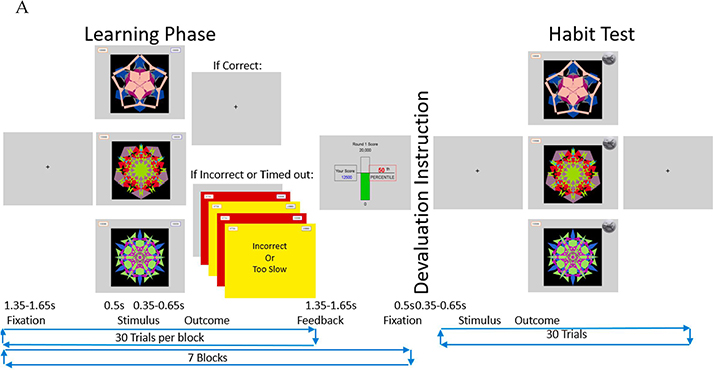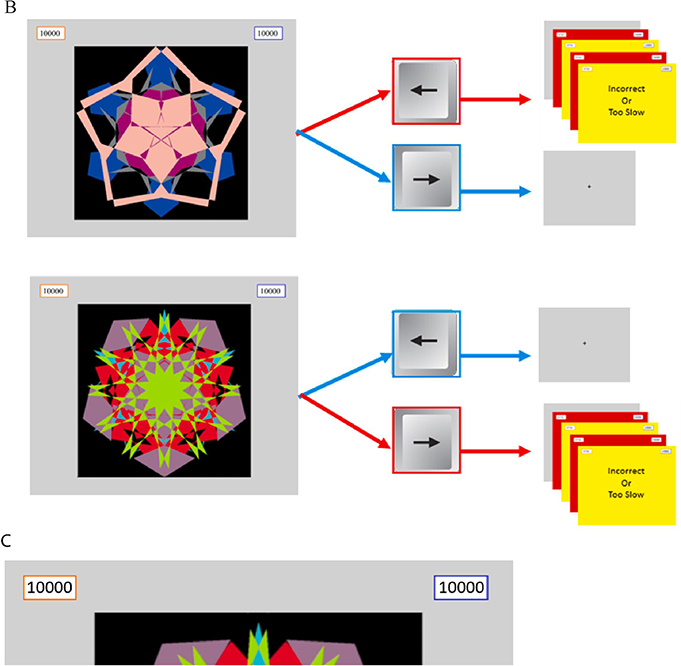Figure 1.
A: Task schematic: Participants performed 7 blocks of 30 trials in the learning phase then received a devaluation instruction in which they were informed one side would subsequently be safe—not requiring a response from its paired arrow key. After which participants performed the habit test in extinction. Pressing the formerly correct arrow key in response to the devalued stimulus is defined as a habit. Figure 1 B: Warning stimuli schematic: Participants learned to make avoidance responses to warning stimuli. If the correct response (blue) was made within .5s, no aversive outcome was delivered. Otherwise participants lost 750 points from the paired score and received feedback informing them they were incorrect or too slow (as appropriate) and red and yellow flashing screens. Figure 1 C shows a close-up image of the left and right scores.


